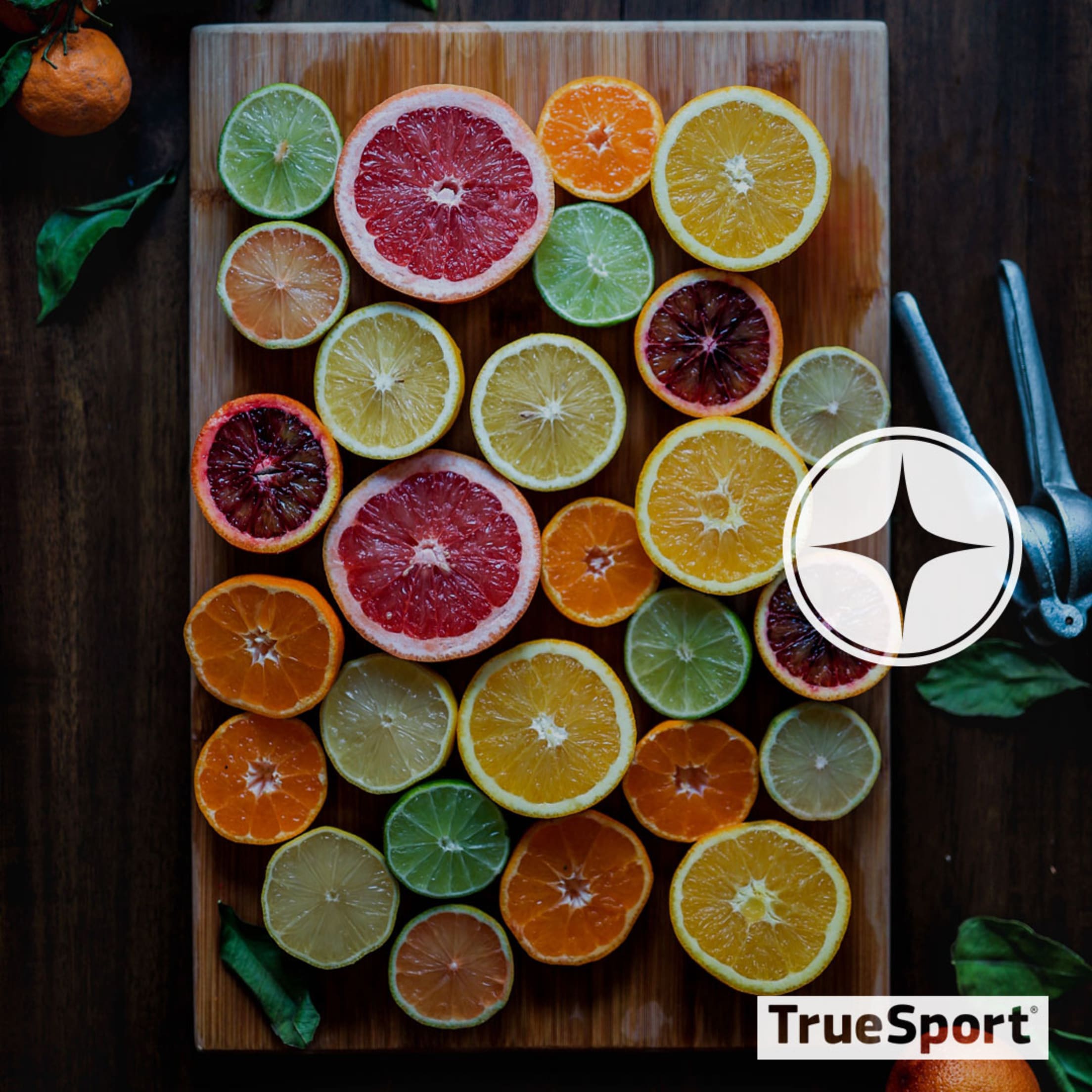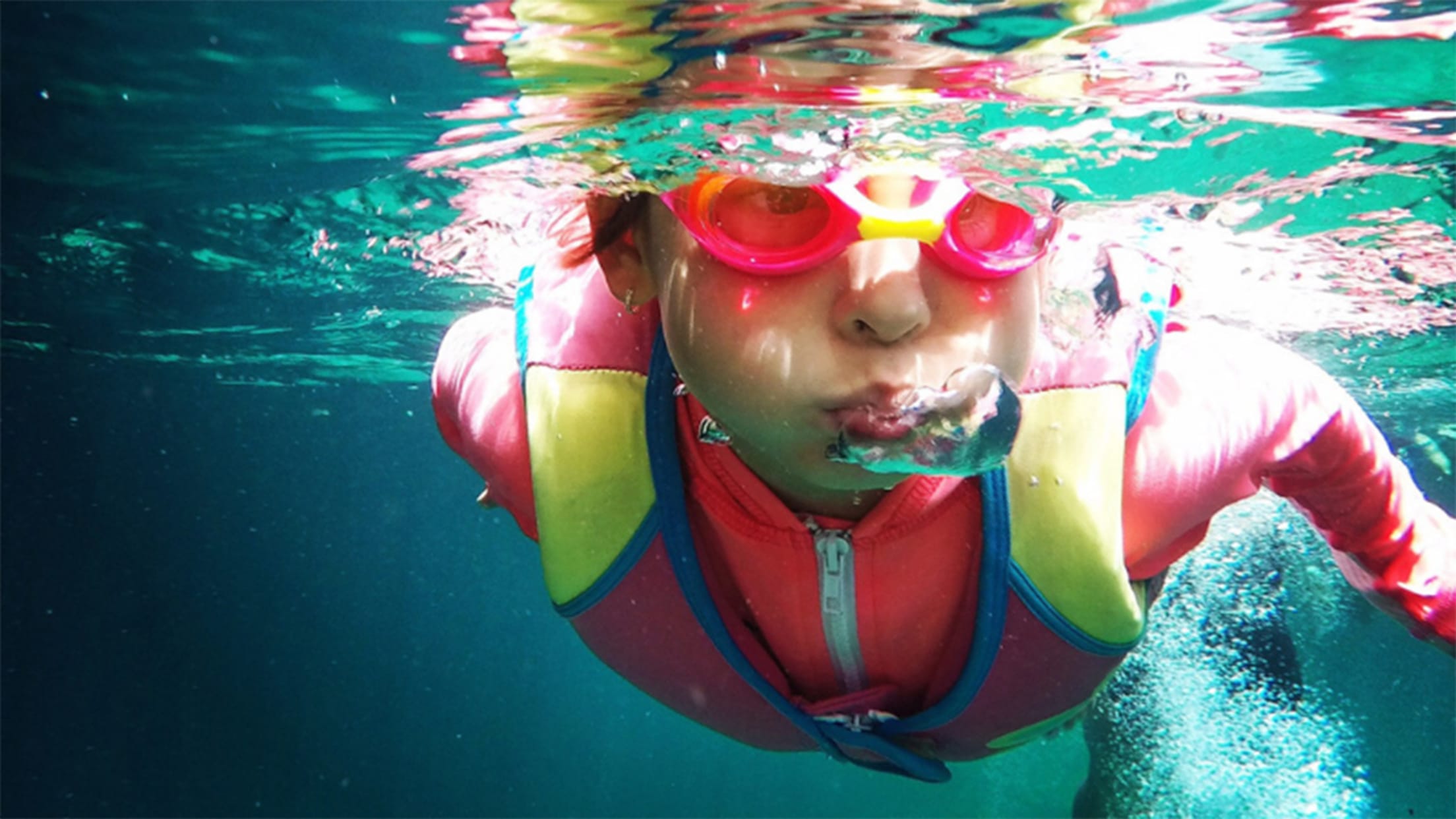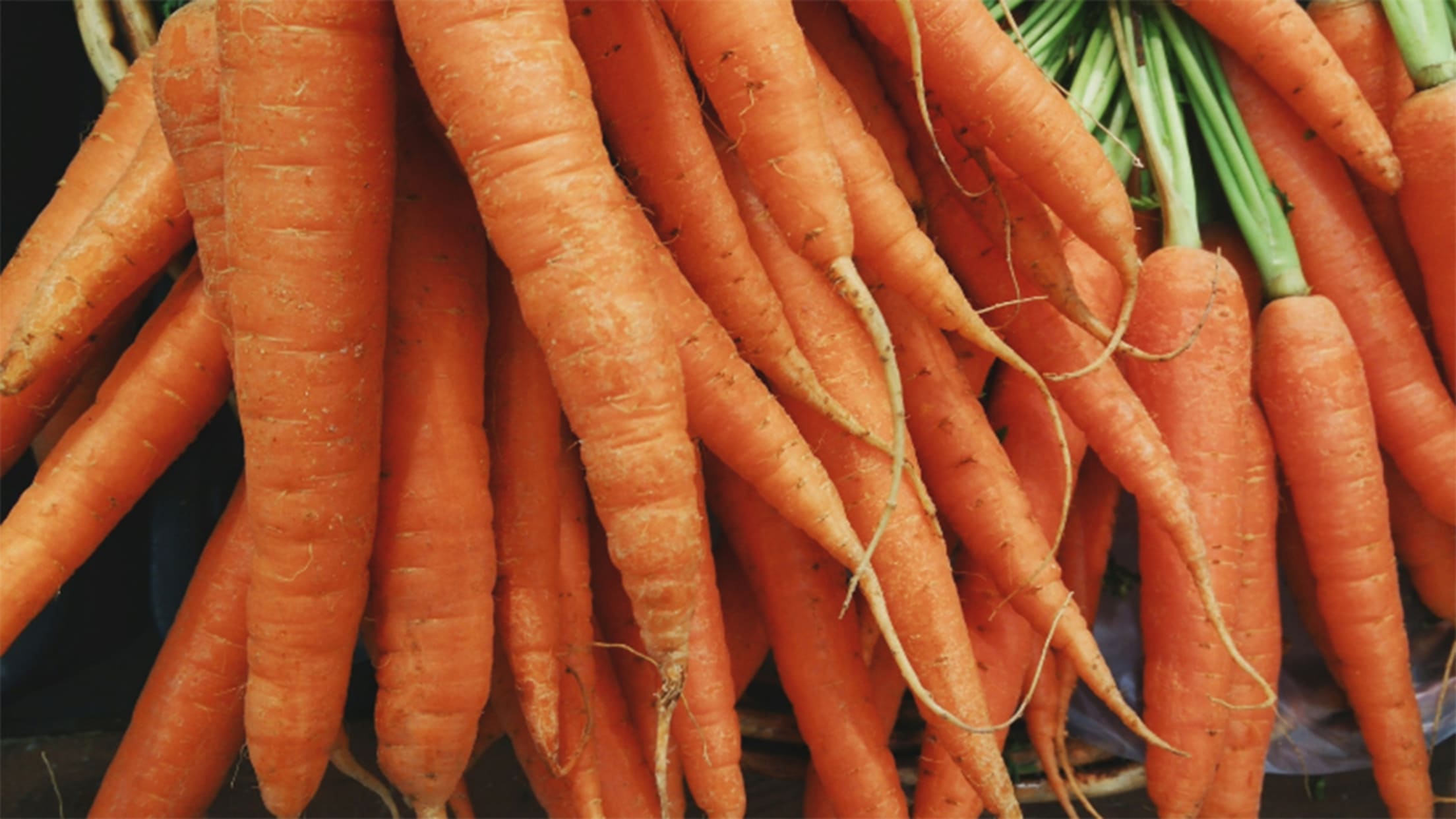TrueSport: March 2019

Sports performance anxiety in youth sports, summer nutrition tips for youth and teen athletes, tips for fueling vegetarian teen athletes and more this month from TrueSport.
Trending
Sports performance anxiety in youth sports
Youth sport advice tends to focus on improving athlete nutrition and training. But even in a "fun" league, sometimes the most harmful stressors aren't in athlete's bodies, but in their heads.
For many kids, sports provide their first taste of anxiety: the stress of taking a game-tying free throw, the tension of running the anchor leg of a relay or just butterflies in the stomach before a big game.
Anyone who has played sports has probably experienced sport performance anxiety, sometimes called 'choking,' at one point or another. But with their brains and self-awareness still developing, sports can be particularly stressful on the minds of youth athletes. This also means it can be especially challenging for parents and coaches to try and soothe these nerves.
The most serious sport anxiety can also make kids lose interest in playing sports altogether. Thankfully, the growing field of sport psychology has given parents, coaches and athletes ways to understand and calm the pregame jitters.

What causes sport performance anxiety
Mental stress on gameday is typically rooted in at least one of several factors. Many of these have more to do with everything surrounding the game, before and after, than the actual game itself.
- Having an audience (particularly one that is loving and supportive): Athletes can become overly self-aware of every decision and play they make when they're on the athletic stage.
- Fear of disappointing others: Even when a parent or coach is supportive, athletes may be anxious about disappointing them.
- High expectations: Every athlete wants to do their best, but internal self-talk might create stress when they set expectations that anything less than a perfect play is failure.
- Post-game analysis: Whether it is from a coach, parent, teammate or themselves, the post-game analysis weighs on an athlete's mindset.
- Recovering from an injury: After an athlete gets hurt, it can take a long time to restore their confidence.
How young athletes can cope
Sport anxiety's kryptonite is preparation. Athletes should arrive early and go through the same warm-up routines they do in practice. During warmups, they should try and visualize themselves playing well while taking some deep, slow breaths. This will put their heads in a focused and relaxed place.
During the game, focusing on the next play, rather than the result, will help keep athletes in the moment. Another simple trick to stay relaxed, even in high-pressure moments, is to smile. If you go through the physical motions of having fun, the mind will follow!
What coaches and parents can do
Parents and coaches can help reduce sport performance anxiety with the language they use before, during and after games. Be wary of only praising athletes when things go right -- a good rule of thumb to avoid adding stress is to praise effort instead of the result. As a coach, it can help to avoid instruction that adds extra pressure to a game situation (e.g., "we have to score on this next series!").
Studies have shown that we stay out of our heads more when performing actions we might describe as "muscle memory." At practice, having athletes do many repetitions of the movements they will be expected to do on gameday (e.g., fielding ground balls) is a good way to ensure they become second nature.
Coaches can also simulate game-type pressure in practice by playing music or recorded crowd noise, having parents stay to watch, or adding in other elements that will get athletes used to performing under stress. It's important to make sure athletes are familiar with and confident in the strategies that are going to be used on gameday.
As a parent, be sure to keep specific post-game comments positive and remember that the time to make corrections is at the next practice, not immediately after a game in the car ride home.
Parents
Summer nutrition tips for youth and teen athletes
Conventional wisdom would say summer is the time when kids eat the healthiest and have the lowest risk of gaining weight. After all, it's sunny and warm outside, kids are playing or going to camps during the day, and all the best fruits and vegetables are in season and easy to get. However, according to a 2016 study by The Obesity Society, obesity rates in young elementary students increased during summer breaks!
Although, youth athletes are at lower risk of gaining weight during summer break due to their high activity level, there are still some important nutritional tips to consider for a healthy and active summer break.

Keep eating on a schedule
The constant availability of food during summer break was a contributing factor for weight gain in the Obesity Society study by von Hippel and Workman.
During the school year, kids followed a more structured schedule of meals and snacks. While not necessarily intended to restrict caloric intake, this schedule created significant portions of the day when no calories were available. At home in the summer, kids ate more frequently and ended up eating more calories overall during the day.
If kids increased their activity level during summer break, then increasing eating frequency and caloric intake would make sense. However, there are many kids who are actually less active during summer break.
Some kids spend their days watching TV or playing video games. In other families, finances may not allow for day camp opportunities. Unfortunately, many parents are reluctant to let their kids freely play and wander their neighborhood due to either real or perceived danger. The combination of increased eating and reduced physical activity is a perfect recipe for weight gain.
Youth sports athletes are typically quite active during summer break, but sticking to a structured eating schedule - or at least putting some parameters around what foods can be eaten at what times -- helps kids establish positive eating habits.
Start with a hearty breakfast
During the school year, starting the day with a good breakfast has been shown to improve cognitive performance during class. Conversely, it's been shown that hungry kids don't perform as well in class. Breakfast is still important in the summer, particularly if your kids have a full day of structured or unstructured activities ahead of them.
What should a summer breakfast look like? Your goal is to provide long-lasting energy, so kids can get engrossed in whatever they're doing instead of looking for snacks every 60-90 minutes. To accomplish this, aim for foods that are high in protein and high in fiber. For example, a breakfast of Greek yogurt, a higher-fiber cereal and fresh fruit provides protein and fiber for satiety as well as natural carbohydrates for energy. Adding eggs further increases the protein and fat content of breakfast.
At the other end of the spectrum, a breakfast that is loaded with added sugar and contains little or no protein (e.g. frozen waffles and Nutella, sugary cereal, fruit juice) won't keep an active kid satisfied for very long, meaning that despite consuming a high-calorie breakfast, they'll be on the hunt for food again be mid-morning.
Stock up on healthy and easy lunch options
In the study by von Hippel and Workman, poor nutritional quality was one of the other contributing factors for weight gain during the summer. As much as you may have not-so-fond memories of school cafeteria food, for many kids the nutritional and portion size structures of the school lunch program provided more balanced nutrition than they got at home.
As parents know all too well, a hungry kid is likely to eat a lot of whatever is most convenient and at least moderately appealing. The trick is figuring out what foods your kid will reach for and which foods they'll leave to rot. For instance, open containers of grapes, blueberries or raspberries make fresh and cold fruit a quick and easy option to reach for. Deli meat and sliced cheese makes a sandwich a quicker option than boxed mac-n-cheese or frozen pizza. Sparkling water with flavoring is refreshing and may be more appealing than plain water, and it's a much better option than sugary soda.
Make good snacks and treats readily available
If you don't want a teenager to eat an entire bag of Doritos in one sitting, you should provide an alternative and leave the Doritos at the grocery store. It is unrealistic to expect kids and teenagers to, left to their own devices, make consistently healthy food choices. However, if there are reasonable alternatives and the opportunity to indulge in occasional treats, parents can help instill a healthy relationship with food that can last a lifetime.
Here's a sample of foods to encourage and provide your athlete, as well as a sample of foods to limit access to. Some of the items in the recommended list have added sugar (popsicles) or are heavily processed (tortilla chips), but on balance are still better choices than other alternatives.
Snacks to encourage:
- Fresh fruit
- Fresh vegetable sticks
- Minimally processed nut butters (peanut, almond, etc.)
- Salsa or hummus
- Cheese
- Popsicles
- Tortilla chips & guacamole
- Dry roasted nuts
Snacks to discourage or limit:
- Cookies
- Fried snack chips (potato, Doritos)
- Nutella or high-sugar added peanut butter
- Queso dip
- Cheese-in-a-can
- Ice cream
- Nachos
- Honey roasted nuts
For many families, even with a schedule of activities, summer break represents a period when kids are at home more hours during the week compared to the school year. With a bit of planning, parents can stock their kitchens and pantries with convenient, healthy and appealing foods to keep everyone from grade schoolers to teenagers fueled for summertime activities. At the same time, parents should help kids stay on a reasonably structured eating schedule to reinforce good habits and minimize mindless snacking driven more by boredom than hunger.
References:
Hippel, Paul T. Von, and Joseph Workman. "From Kindergarten Through Second Grade, U.S. Children's Obesity Prevalence Grows Only During Summer Vacations." Obesity, vol. 24, no. 11, 2016, pp. 2296-2300., doi:10.1002/oby.21613.
Coaches
Tips for fueling vegetarian teen athletes
Being a vegetarian might seem at odds with also being a competitive athlete, but it's becoming far more common, even at sports' highest levels.
Martina Navratilova, one of the best tennis players of all time, credits a plant-based diet as the reason she was able to win majors into her late 40s. NBA champions Glen Davis, James Jones and John Salley are also vegetarians, as was Ironman Hall of Famer Dave Scott when he was training for his six Ironman World Championships. And five-time Wimbledon champion Venus Williams, 300-pound NFL lineman David Carter and American champion Olympic weightlifter Kendrick Farris are not only vegetarian, but vegan.
Regardless of if your athlete participates in an endurance, strength or even combat sport, eating a vegetarian diet and still performing to their potential can be done. Figuring out what exactly to feed a plant-based athlete isn't always easy in the beginning, but following these tips will help them cover all their nutritional bases so they can then cross them on the field.

Tip No. 1: Get enough protein
The macronutrient vegetarians need to deliberately seek out most is protein. While plant and vegetable proteins repair muscle the same way animal proteins can, the American Dietetic Association (ADA) recommends vegetarian athletes increase their protein intake 10% to help account for plant proteins that don't get fully digested by the body. For endurance athletes, this makes the daily protein recommendation 0.55-0.64g per pound of bodyweight and 0.73-0.77g per pound of bodyweight for more strength-based athletes.
Vegetarian athletes can account for this inherent deficit by consuming beans, nuts, seeds, whole grains and lentils. For athletes that are ovo-lacto vegetarians (meaning they still eat some non-meat animal products), eggs and dairy are abundant sources of protein. Shakes can also be an easy and tasty way to supplement the protein normally consumed through meat. A shake recipe almost any athlete will enjoy involves blending ice, frozen fruit, chia seeds, peanut or nut butter and protein powder with milk, coconut milk or water.
Tip No. 2: Diversify the diet
For new vegetarians, it can be easy to find a few foods that 'work' then become overly-reliant on them. While convenient, eating the same handful of meals can lead to deficiencies in certain vitamins and minerals. These deficiencies can be harmful to an athlete's health and their athletic performance, causing fatigue, poor bone density and the inability to properly repair and strengthen muscle.
The simplest way to make up for the lack of zinc, magnesium and other micronutrients the modern diet leaves even many non-vegetarians deficient in is to 'eat the rainbow.' Simply, this just means to eat a wide variety of fruits and vegetables and avoid sticking to the same week in and week out. Perhaps more than any other micronutrient, vegetarians should take particular care to eat food containing Vitamin B12, which is not found in plants but can be taken in by eating B12-fortified foods such as cereals, soy milk, vegetable stock and eggs and dairy products if your athlete is an ovo-lacto vegetarian.
Tip No. 3: Estimate what they're eating
Except for maybe 1 percent of the most devoted athletes, the average teen doesn't have the dedication to count calories, macronutrients, or plan and record their meals. But even just getting a rough estimate of their protein, fat, carbohydrate and calorie intake while also keeping an eye on their mood, energy level, weight and athletic performance can give a good estimate as to which areas their diet is sufficient and deficient.
Since most teens are on routine schedules and many of their meals are either prepared or eaten at home, parents themselves can log what their athletes are eating (asking when needed to fill in the gaps), then determine macronutrient and calorie counts on a site or app like MyFitnessPal or Cronometer. Logging these daily counts and simply asking your athlete how they feel for even just two to three weeks can go a long way in figuring out how to make small adjustments to a veggie athlete's diet and help them feel and perform their best.
Tip No. 4: Be mindful of the GI Index
It's important to remember that not all vegetarian foods are created equal. Many of the foods most readily available to vegetarians also rank high on the glycemic index, a scale measuring how much influence carb-heavy foods have on the body's blood sugar.
High GI foods are better immediately following an endurance workout as they are quickly absorbed by the body. At any other time, however, these foods spike the body's blood sugar and promote hunger as well as fat storage. Conversely, low GI foods are digested more slowly. This leads to feeling full longer and less unwanted weight gain.
For quick reference, here is a table showing the glycemic load[1] for several common vegetarian foods. A load of 10 or below is considered low, while anything 20 or above is considered high and should be eaten sparingly.
Food:
- Hummus
- Peanuts
- Carrot
- Apple
- Black beans
- Whole wheat bread
- White wheat flour bread
- Oatmeal
- Brown rice, steamed
- Spaghetti, whole grain
- Instant oatmeal
- Sweet potato
- Bagel (white)
- Raisins
- White rice, boiled
- Russet potato
Glycemic Load (serving size):
- 0 (30g)
- 1 (50g)
- 4 (80g)
- 5 (120g)
- 7 (150g)
- 9 (30g)
- 11 (30g)
- 13 (250g)
- 16 (150g)
- 17 (180g)
- 21 (30g)
- 22 (150g)
- 25 (70g)
- 28 (60g)
- 29 (150g)
- 33 (150g)
The glycemic indices and loads for more foods can be found at Health.Harvard.edu.
Tip No. 5: Making a calculated transition
If your athlete is merely just interested in the idea of vegetarianism or wants to try it out and see how it affects their athletic performance, it might be easier for everyone involved to make it a gradual transition as opposed to a wholesale, overnight change.
If you and your athlete eat meat every day, a first step could be to try and incorporate 'meatless Mondays' (or any other day) as a first step in experimenting with recipes and the new logistical challenges that come with making the switch. From there, veggie-only days could be expanded to two days a week and so on, until a groove is hit where it becomes easier to not have to think about preparing meatless dishes.
A sample meal plan for vegetarian athletes
Keeping in mind the above, a daily mean plan for a vegetarian teen participating in a cardiovascular-demanding sport could look like some combination of the following:
Breakfast:
- Oats with yogurt and fruit
- Smoothie with frozen fruit, chia seeds, peanut or nut butter, protein powder, coconut milk
- Potato and broccoli frittata (ovo-lacto)
Lunch or Dinner:
- Rice or pasta with tofu, vegetables, and sauce
- Quinoa bowl with lentils, beans, salsa
- Cauliflower and chickpea curry, side salad, and baked sweet potato
- Black bean burgers with grilled peppers and hummus
- Margherita pizza with stuffed Portobello mushrooms
- Baked penne pasta with roasted vegetables
Snacks/Anytime:
- Fruits
- Nuts
- Hummus/lentil/chickpea/black bean dip
- Dark chocolate
- Coconut ice cream
- Fruit 'crumble' bars
- Popcorn
Like with anything diet-related, figuring out what's best for your vegetarian athlete is going to be a matter of trial and error. Ultimately, it will be steady small changes that lead to the big ones they are looking for from a diet change.
About TrueSport
TrueSport®, a movement powered by the experience and values of the U.S. Anti-Doping Agency, champions the positive values and life lessons learned through youth sport. TrueSport inspires athletes, coaches, parents and administrators to change the culture of youth sport through active engagement and thoughtful curriculum based on cornerstone lessons of sportsmanship, character-building and clean and healthy performance, while also creating leaders across communities through sport.
For more expert-driven articles and materials, visit TrueSport's comprehensive LEARN resource.
This content was reproduced in partnership with TrueSport. Any content copied or reproduced without TrueSport and the U.S. Anti-Doping Agency's express written permission would be in violation of our copyright, and subject to legal recourse. To learn more or request permission to reproduce content, click here.
